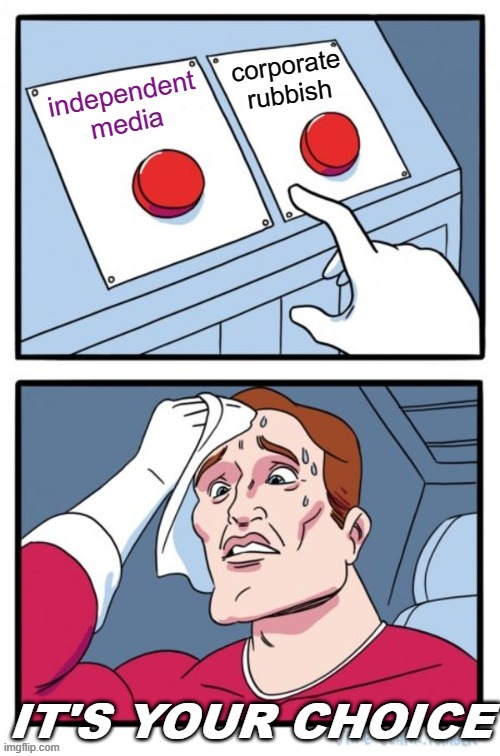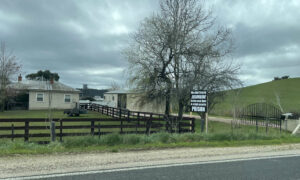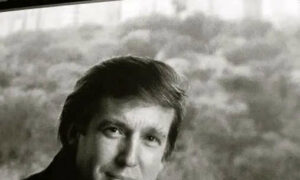FORESTRY TASMANIA (FT) states in its Sustainability Charter: (HERE) that it aims to “provide meaningful feedback to the public on issues raised” and even claims in its recent Sustainability Report (HERE) that it is committed to “ensuring that the media, and by extension, the wider community, were well informed about our activities.”
But FT’s response to inquiries by Peter Boyer (HERE), The Mercury’s climate change columnist, illustrates the yawning gulf between the agency’s lofty rhetoric and belligerent practice.
Back in the middle of last year, Boyer had a meeting with Dr Hans Drielsma, Forestry Tasmania’s Executive General Manager, and Ken Jeffreys (HERE), FT’s General Manager Corporate Relations and Tourism, to discuss the agency approach to measuring and managing forest carbon. The impetus for the meeting was the release of the “Green Carbon” report (HERE), which was sponsored by The Wilderness Society and undertaken by a team of researchers from the Australian National University. According to Boyer, the meeting (HERE) commenced with “a heated 15-minute lecture on why I should stop questioning official information about Tasmanian forestry management, before we finally got to the issue of assessing forest carbon.”
It wasn’t until mid-October that Boyer took the issue up again, this time posing a series of specific questions via email about FT’s methodology for carbon accounting. Over the subsequent month, Boyer exchanged emails with Jeffreys and Martin Moroni (HERE), a FT research scientist specialising in forest carbon.
The Button-Grass Factor
Initially, Jeffreys and Moroni clarified a number of points. For example, Boyer had wanted to know why it was that a 2007 consultant’s report for FT by MBAC Consulting Group (HERE) used estimates of stored carbon that seemed very low to the volumes estimated by other researchers such as the ANU team. Boyer noted that MBAC’s estimate was that “the carbon density of Tasmanian forest was around that of mainland woodlands. That doesn’t seem right to me.”
Boyer pointed out that “MBAC does not seem confident about its estimate. On p. 8 the MBAC report says: ‘The above ground biomass densities for the native forest appear low compared to published estimates. At 168 to 181 tonnes/ha, the above ground biomass appears more closely representative of medium woodland (150 tonnes/ha) to tall woodland (200 tonnes/ha) forest types.'”
Moroni helpfully explained that the estimate was an average across FT’s entire estate, including areas not classified as tall forests such as “a range of non-eucalypts, including button grass and scrub.” Boyer noted a further breakdown on the data was desirable and expressed concern that the FT consultant’s report seemed to “downplay the exceptional carbon-storage capacity of the older wet eucalypt forests.”
But on other issues, Boyer made little progress. In particular he wanted to know what specific criticisms FT had of the Green Carbon report. Aside from several comments relating to post-logging burning practices, Jeffreys and Moroni provided no comprehensive critique. When Boyer restated his request for the details of what the “serious flaws” were that Drielsma had referred to at the July meeting, Jeffreys got testy. “We have answered your first question many times,” was his response.
Secret Science
More problematic was FT’s repeated insistence that the consultant’s report estimates were based on FT data collected from 3000 sites in state forests. “Is it possible to get a print-out of the data including forest types and age?,” Boyer asked. Not surprisingly, he wanted to compare the respective estimates by FT and the ANU researchers for the carbon storage capacity of Tasmania’s forests. Moroni’s response was less than encouraging. “An enormous amount of resources have been used to develop the permanent and temporary sample plots and to take measurements and re-measurements, so the full dataset is unlikely to be released without good need and an agreement being in place,” he wrote. Moroni then suggested Boyer have a look at FT’s Sustainability Charter, a vague document that provides little helpful information on the complexities of assessing forest carbon.
Not surprisingly, Boyer expressed his frustration that basic measurement data was being kept secret and therefore could not be contested. “You are asking me to take your assurances at face value while rejecting the statements of others (who at least cited sources), and you criticise the methodology of others but don’t reveal your own methodology. It’s as if this is a corporate secret,” he wrote. Jeffreys chimed in too, stating that FT would be “happy to share data with reputable research organisations who are prepared to work with us on as collaborative basis.”
But Boyer was tenacious, suggesting that he couldn’t see what the commercial value of the data was to FT but stressed that there was a considerable public interest in having it at least available to researchers who “have a professional role in the issue of forest carbon”. In a mid-December email Boyer asked if FT would consider releasing the data to the ANU researchers. The silence from FT was deafening.
Over six months after first raising the issue with FT, Boyer finally set out the saga in one of his weekly columns in The Mercury (Published on TT: HERE)
Playing the victim
At first, there was no discernable response from FT to Boyer’s column, which was published on Australia Day. A few hours after I contacted FT the following day, the agency emailed me explaining that it had published a copy of a letter to the editor of The Mercury on its website. It had also uploaded an Acrobat file of “emails exchanged between Mr Boyer and FT” so that “the public to make up its own mind”. However, what they didn’t state was that nine emails in the protracted exchange were not released. If nothing else, the omitted emails demonstrate the depth of background research Boyer undertook in order to understand the complexities of carbon measurement.
It is also notable that, in their apparent haste to try and score points, FT haven’t even taken the reasonable step of removing personal information in some of the email headers and footers. (One is left wondering whether this disclosure is consistent with FT’s obligations under the Personal Information Protection Act).
In his letter to the editor, Jeffreys sought to position himself as the victim of overzealous journalism, complaining that Boyer had chosen to “play the man rather than the ball”. It is a rather silly claim since Boyer’s column firmly focuses on the policy issues and, where he mentions individuals, it relates solely to what they have said or done in response to his requests for information. It is a claim that is all the more bizarre since Jeffreys doesn’t dispute Boyer’s version of the July 2009 meeting at which he and Drielsma apparently berated Boyer for “questioning official information about Tasmanian forestry management.”
In his letter Jeffreys also claimed that “to the best of our ability we answered every question he had.” It may sound plausible to readers of the letters in a newspaper or FT’s website but it is clearly inaccurate. While FT did respond to many of Boyer’s queries, the emails reveal less and less engagement with the substance of the question and an increasing enthusiasm to defend logging old-growth forests, tout new FT pet projects such as wood-fired power stations and even pose extensive questions of Boyer.
Nor does Jeffreys’ complaint that Boyer “kept asking the same questions over and over again apparently in the hope that through exhaustion we would provide the answer he wanted to hear” stand up to scrutiny. While some commercial ‘gotcha’ current affairs television programs adopt the underhanded tactic of keeping the camera rolling until the interviewee finally snaps in response to a relentlessly repeated question, this approach doesn’t work in email exchanges. Nor does the email log support Jeffreys claim, as most of Boyer’s questions clearly evolve in response to previous comments from FT staff. 16 emails spread over two months is hardly like to cause “exhaustion”. Even on November 10, when there was a flurry of five emails, they were separated by one or more hours.
Indeed, Jeffreys complaint of the repetitiveness of some of Boyer’s questions is rather ironical for a journalist turned spin-doctor. As an ABC journalist, Jeffreys had a well-deserved reputation for persistence and inquisitiveness. It now appears that what he saw as a virtue when he was a journalist he now sees as a vice in others in his former profession. Indeed, any fair-minded reader of the full email exchange would see Boyer’s persistence as an admirable example of probing research, which is all too rare in the era of hit-and-run journalism.
The full email exchange and Jeffreys’ letter to the editor are a damning illustration of the deep-seated cultural problems at senior levels of Forestry Tasmania. Instead of answering Boyer’s questions, such as providing details of FT’s concerns about the Green Carbon report or whether they will open up their carbon data for independent scrutiny, FT’s senior staff prefer to deride his attempt to do his job on behalf of the public.
It is time that FT’s board of directors insisted that senior staff comply with the statements on access to information that it has set out in its own Sustainability Charter and subsequent sustainability report. If the board of directors are unwilling to insist on more information and less belligerence from senior staff, then it’s time that David Llewellyn, the Minister for Energy and Resources, did.



























Charles Gilmour
January 28, 2010 at 14:28
On the 1st June 2007 FT said, – “Forestry Tasmania threw open its doors today to signal a new era on community engagement†, and made a commitment to “unlocking the battered briefcaseâ€, and “consigning it to history’â€, Mr Gordon said.
Evidently they still haven’t found the key.
They made a public statement of “Pursing meaningful dialogue with critics, including environmental groups.†And “A policy to respond where possible to all media inquiries within an hour.â€
They talk of “More openness and improved transparency†infact an “unprecedented level of transparencyâ€.
Forestry Tasmania demonstrably has their own special dictionary of meanings.
It’s titled ‘Llewy’s Labor of Love-in’s – the toy boy’s media guide to constraining and subverting the truth in accountable forestry practices.’
Tony Saddington
January 28, 2010 at 15:19
I read Boyer’s article in the Mercury at the time and was astounded at the defensive position that Forestry had taken.
Claims by Forestry that implied that carbon counting was ‘cheap science’ and inaccurate because of TWS sponsorship – not because it was conducted by university researchers.
So why so defensive? As a government department they are supposedly answerable to the public.
john Hayward
January 28, 2010 at 18:06
The Mafia follow the code of “omerta”, or silence. in response to questioning from outsiders. It would be far more honourable if FT did the same, rather than treating the public they are supposedly serving to insultingly transparent fabrications.
These whackers are still telling gullible people their pulpwood plantations store more carbon than old growth.
John Hayward
Pete Godfrey
January 29, 2010 at 00:02
I did a study a couple of years back and the figures from Forestry Tasmania’s Three Year Plan was 180 tonnes of Pulp Wood and 30 tonnes of sawlog on average per ha of logged State Forest. So their carbon figures don’t seem to take into account the Buts, Crowns or any understory or non woodchippable resource.
David Obendorf
January 29, 2010 at 01:56
Bob, your plea that “it’s time that FT’s board of directors insisted that senior staff comply with the statements on access to information that it has set out in its own Sustainability Charter and subsequent sustainability report” is like asking a totalitarian cabal to surrender their power. They are the gatekeeper’s, they know it and they are utterly shameless in tedious games of perception.
And as for your further plea: “If the board of directors are unwilling to insist on more information and less belligerence from senior staff, then it’s time that David Llewellyn, the Minister for Energy and Resources, did”. Regrettably there is the fundamental problem, mediocre governance. Bob, it’s unlkely that this particular minister would have strength of character for such boldness.
As for FT’s spin doctors…Governor George Arthur could have used such canine talent at Eaglehawk Neck on the “dog line”.
Bob Burton
January 30, 2010 at 09:38
Charles,
I hadn’t seen that June 1, 2007 “Pursing meaningful dialogue with critics, including environmental groups” media release.
On checking, it no longer appears to be on the FT website.
If you have a copy, could you email it to me via
http://www.sourcewatch.org/index.php?title=Special:EmailUser/Bob_Burton
with thanks
Bob